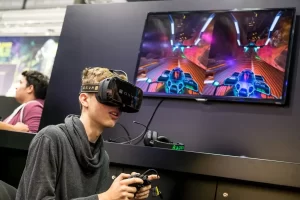
In the ever-evolving world of technology, researchers and engineers are constantly pushing boundaries to develop innovative ways of interacting with devices. One particularly exciting advancement in recent years is the development of neural interfaces that allow individuals to control games using their minds. This groundbreaking technology holds immense potential for revolutionizing the gaming experience and opening up new avenues for human-computer interaction.
The Science behind Neural Interfaces
Neural interfaces, also known as brain-computer interfaces (BCIs), are communication systems that bridge the gap between the human brain and electronic devices. They work by leveraging brain signals, either through invasive or non-invasive methods, to interpret and translate the user’s intentions into commands that can be understood by computers or gaming consoles. This cutting-edge technology relies on the understanding of neural activity and the ability to accurately decode brain patterns.
Enhancing the Gaming Experience
Imagine playing your favorite video game and being able to navigate through virtual worlds or control characters solely with your thoughts. Neural interfaces have the potential to eliminate the need for traditional input devices, such as keyboards or controllers, and provide a direct and intuitive connection between the player’s mind and the game environment. This immersive experience can take gaming to a whole new level, offering a sense of presence and control like never before.
Overcoming Limitations and Challenges
While neural interfaces have shown great promise, there are a few challenges that need to be addressed. One of the primary concerns is the accuracy and reliability of decoding brain signals. Neural activity is highly complex, and it requires sophisticated algorithms and machine learning techniques to decipher the user’s intended commands effectively. Additionally, adapting the technology to individual users and accounting for variations in brain patterns can be a significant hurdle.
Applications Beyond Gaming
The implications of neural interfaces extend far beyond the realm of gaming. This technology holds profound potential in various fields, including healthcare and accessibility. For individuals with physical disabilities, neural interfaces can provide a means of communication or control over their environment. They allow paralyzed individuals to interact with computers, manipulate robotic limbs, or even regain some degree of independence. Moreover, researchers are exploring the use of neural interfaces in cognitive enhancement and mental health treatments.
The Future of Neural Interfaces
The future of neural interfaces is incredibly promising. As technology advances and our understanding of the human brain deepens, we can expect neural interfaces to become more accurate, reliable, and seamlessly integrated into our daily lives. With continued research and development, we may see widespread adoption of this technology, enabling us to control not just games but also various other devices using only our thoughts.
Conclusion
Neural interfaces represent a remarkable intersection between technology and the human mind. By harnessing the power of our brain signals, we can delve into immersive gaming experiences and explore new possibilities for human-computer interaction. While challenges remain, the potential benefits of this technology are immense, from improving the quality of life for individuals with disabilities to opening up exciting avenues for cognitive enhancement. As we venture further into this realm, the collaboration between technology and the human brain holds the key to shaping a future full of endless possibilities.


